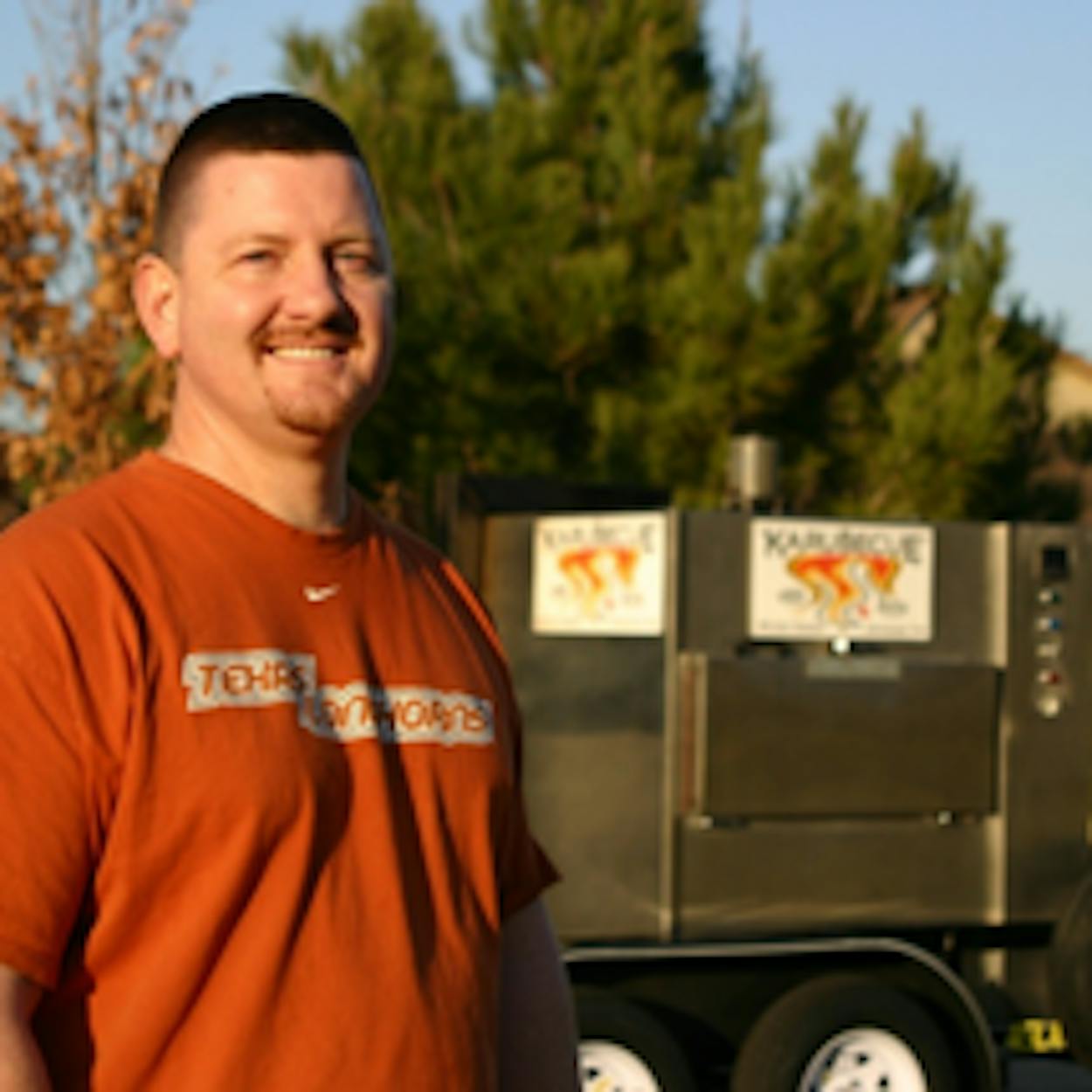For three days every August, Bill Karau and a group of friends, some of whom he has known since the first grade, visit eighteen different barbecue joints, about six a day. These self-described “barbecue enthusiasts” have traveled to places like Missouri, Kansas, and Louisiana and have tasted everything from pork shoulder in North Carolina to brisket in Texas. Karau has talked technique, temperature, smoke, and meat with more than one hundred pitmasters, including bosses who work for what he considers three of the top five barbecue joints in Texas: City Market in Luling, Smitty’s Market in Lockhart, and Cooper’s Old Time Pit Bar-B-Que in Llano. You might say the 44-year-old Karau is obsessed with ’cue. “I like getting as close to the coal face as possible, he explains. “You have to pace yourself. The classic rookie mistake is to eat until you’re no longer hungry at the first joint on the first day. They cry like babies at the end.”
But Karau’s passion for barbecue extends beyond his eating-frenzied outings with friends. He cooks meat on his pit a couple of times each month, feeding his neighbors with brisket, pork butts, ribs, chicken, and turkey cooked on a backyard model or his experimental commercial unit, the Karubecue X-400. Originally from Pittsburg, Karau moved to Houston when he was six and has lived in Dallas for the past eleven years. Like many Texans, he fell in love with barbecue—and its accoutrements. “There’s a lot of mystique around barbecue, especially in Texas,” he says. “There’s a whole industry around judging it. I’m the kind of person who’s always looking for the science behind the art.”
It was Karau’s enthusiasm for learning how things work that led him to believe he could produce meat that tasted better than anything he could purchase. In the summer of 2004 Karau began his mission: to build a barbecue pit that would not produce creosote, a bitter and unhealthy chemical associated with wood smoke. His objective was to taste the meat and wood equally—and to avoid barbecue overcome with smokiness. With each model, Karau, who was trained as an architectural engineer at the University of Texas at Austin, moved a step closer to his goal. His estimated time of production—four months—turned into four years, with almost twenty failed designs. When his fourth incarnation reached the right temperature, a six-foot-tall flame shot up like a jet engine. Other attempts proved just as futile despite his meticulous efforts. Several times he logged more than two hundred hours on a pit that would prove to be a failure in less than a minute. “It was like Groundhog Day,” he says. “Sometimes I’d think, ‘I’m done. I’ve spent too much time and money on it.’ But I was convinced that the next time I would get it right.”
Once Karau developed a fundamental understanding of how wood burns, things got brighter. He built the first successful prototype on his eighteenth attempt and eventually produced about fifteen units of this design, which he aptly named the Model 18. After some constructive customer feedback, he began working on the B-30. In this updated version, the pit’s firebox works like a carburetor to control the fire’s air mixture—automatically. And there’s no need for special charcoal or pellets, just traditional wood like oak, hickory, and mesquite. “If you can put a log on the fire, you can operate one of my pits,” Karau says. In fact, it is so easy—build a fire for about thirty minutes, put on the meat, and set the temperature—that his eleven-year-old son, Gus, became the family’s pit boss two years ago.
Karau’s hobby (a.k.a. obsession) took up more time and energy than he had expected—and left about four B-30’s in his garage. But he’s happy with the outcome. “The notion of cooking meat with fire has been around for hundreds of thousands of years. People would look at me and say, ‘What are you doing?’ But I kept going for the challenge of it,” he explains. “Now, most say, ‘That sounds nice, but I’d like to try it’ with healthy skepticism. The proof is in the pudding.” At some point, Karau wants to license his breakthrough in barbecue technology to a larger company. “My wife will be happy when she can park in the garage again.”







